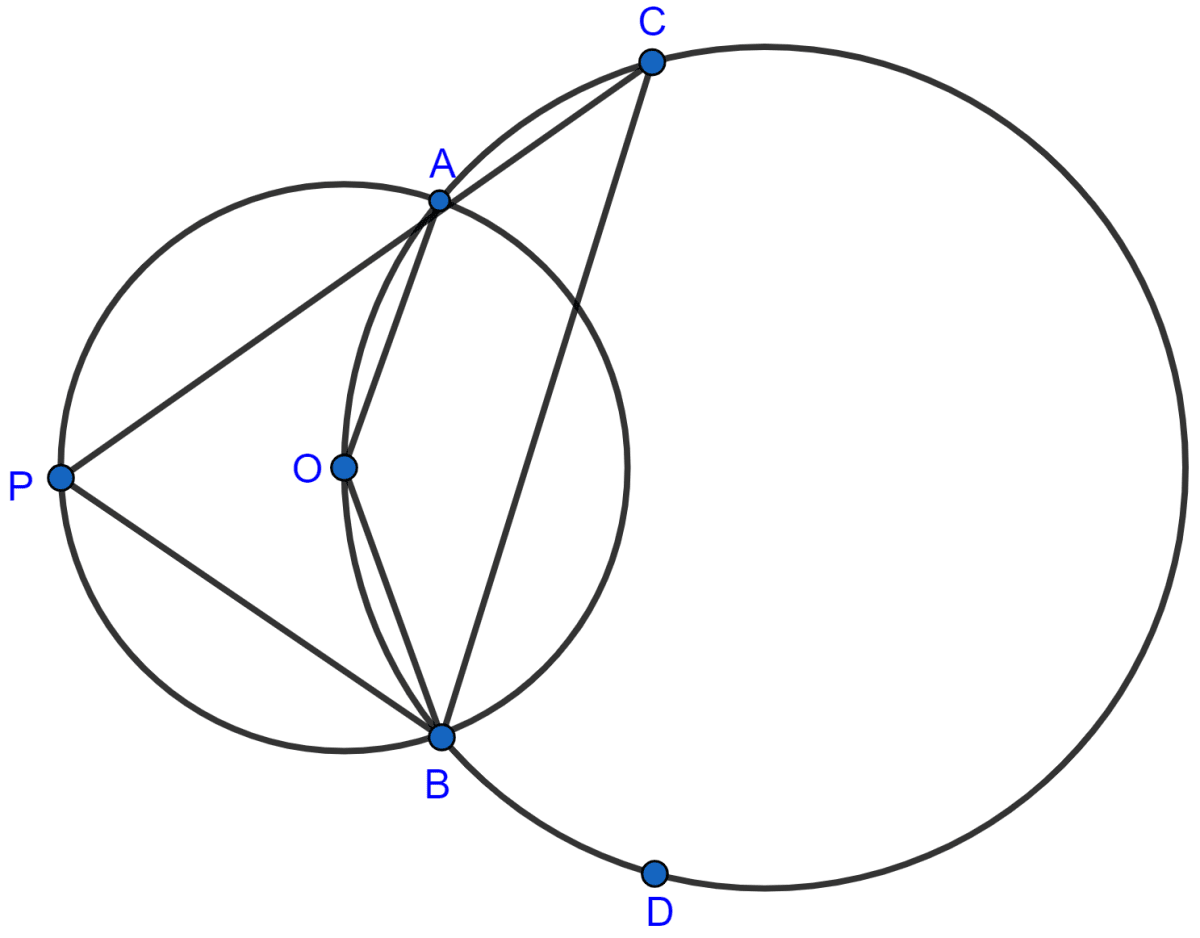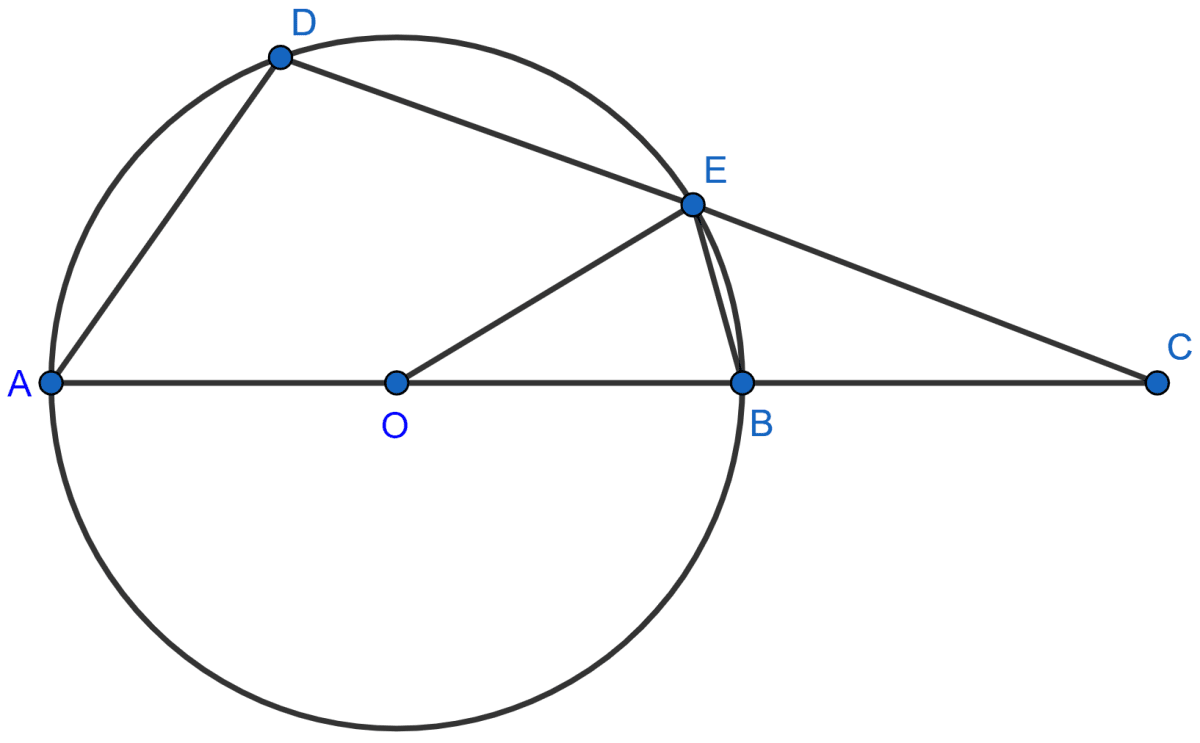Mathematics
The figure shows two circles which intersect at A and B. The center of the smaller circle is O and lies on the circumference of the larger circle. Given ∠APB = a°.
Calculate, in terms of a°, the value of :
(i) obtuse ∠AOB,
(ii) ∠ACB,
(iii) ∠ADB.
Give reasons for your answers clearly.

Circles
21 Likes
Answer
(i) We know that,
Angle at the center is double the angle at the circumference subtended by the same chord.
obtuse ∠AOB = 2∠APB = 2a°.
Hence, obtuse ∠AOB = 2a°.
(ii) OACB is a cyclic quadrilateral.
⇒ ∠AOB + ∠ACB = 180° [Sum of opposite angles in a cyclic quadrilateral = 180°.]
⇒ ∠ACB + 2a° = 180°
⇒ ∠ACB = 180° - 2a°.
Hence, ∠ACB = 180° - 2a°.
(iii) Join AD and BD.

As, angles in same segment are equal.
∴ ∠ADB = ∠ACB = 180° - 2a°.
Hence, ∠ADB = 180° - 2a°.
Answered By
15 Likes
Related Questions
In the figure, O is the center of the circle, ∠AOE = 150°, ∠DAO = 51°. Calculate the sizes of the angles CEB and OCE.

In the figure, given below, P and Q are the centers of two circles intersecting at B and C. ACD is a straight line. Calculate the numerical value of x.

In the given figure, O is the centre of the circle and ∠ABC = 55°. Calculate the values of x and y.

ABCD is a cyclic quadrilateral in which AB is parallel to DC and AB is a diameter of the circle. Given ∠BED = 65°; calculate :
(i) ∠DAB,
(ii) ∠BDC.
